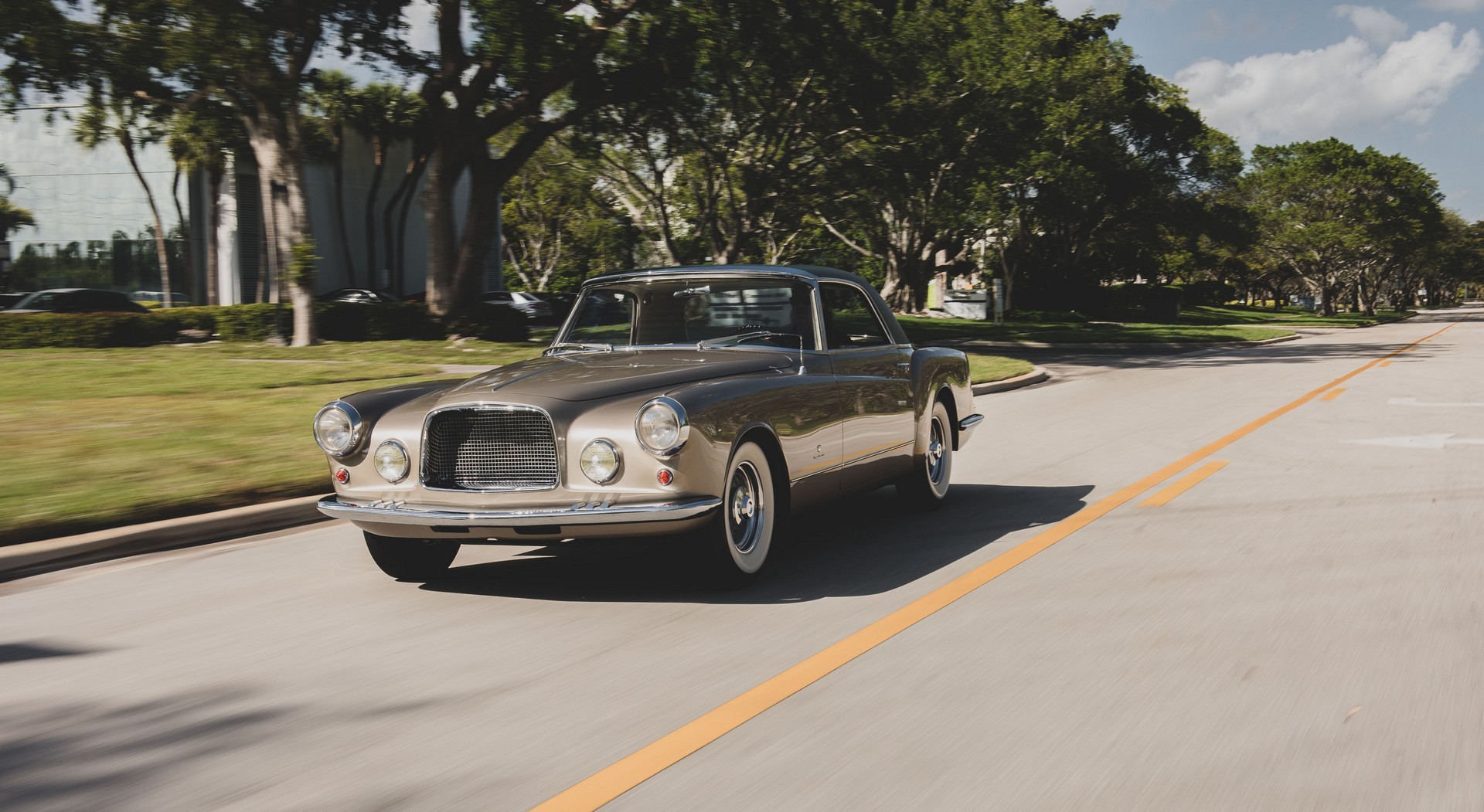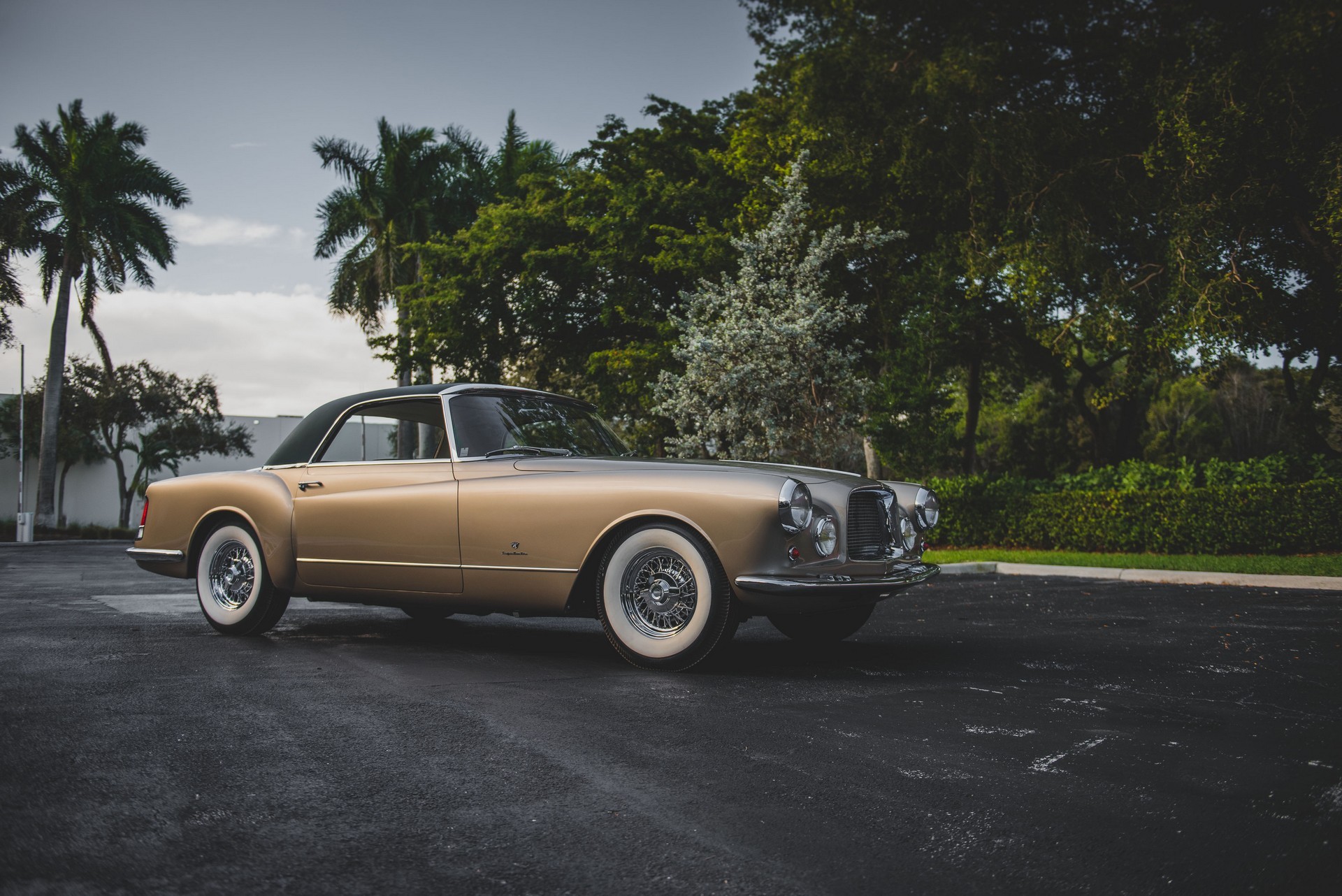One of the most influential Italians in modern history was the former head of FIAT, Gianni Agnelli, the man who, among other things, ultimately saved Ferrari from a probable extinction in the late 60s. As anyone might imagine, the Italian magnate was a proper gearhead – one of corporate scale –and his exquisite taste for cars reached far and wide. One of the most fabulous creations to have his blessing is – unassumingly – a 1956 Chrysler 300.
Born in 1955, the letter series Chryslers are particularly intriguing concerning piston-addicts because they are single-year-generation models. Until its retirement at the end of 1966, the 300 spun the first twelve English alphabet letters in just as many years.
Intended as one of Virgil Exner’s Forward Look banner-bearing creations, the stylish coupes drew inspiration from an early fifties collaboration between the American corporation and Italian designers and coachbuilders. The Chrysler Special models were – in a sense – forerunners of what the Detroit giant was envisaging for the decade.

However, it wasn’t just the American public that was charmed by the styling and performance of the new Chrysler models. Even Italians admired it – mainly, one had a taste for American power. Gianni Agnelli was, in the mid-50s, on his way to taking over the reins of the company founded by his grandfather in 1900.
A playboy of planetary proportions, Gianni was a well-educated, refined, styled, intelligent, and charming character with an affinity for beauty in all its shapes, sizes, forms, and manifestations. An authentic Italian lover, the young Agnelli was also an avid gearhead.
After witnessing the masterpiece coachwork laid out by his co-nationals on American platforms, the future boss of FIAT decided he wanted a go. Consequently, in April 1955, Chrysler ordered a custom-made 300 automobile.
At the time, the carmaker was already rolling out its second-generation 300, the B model. However, the bulky American design wasn’t appealing to European taste. Gianni Agnelli wanted American power but British looks.
(Somehow, this appears to have been the universal recipe for automotive perfection of that era. A few short years later, a Texan farmer would have the same idea, albeit with Ford engines and British-built bodies).

After receiving the order, Chrysler turned to their Italian partners. Not to Carozzeria Ghia – the author of the famous Specials from the early 50s – but to the man who worked at Ghia and penned the elegant automobiles.
His name was Felice Mario Boano, and his coachbuilding shop – founded after he left Ghia – was entrusted with the Agnelli project (after all, who better to know what an Italian wants if not another Italian?)
It took Boano’s designers ten days to complete a set of sketches with several propositions for the “two-seat coupe with a powerful, modern mechanical system. A classic, British-style coupe, not a modern shape.” Those were the customer’s conditions, and the body-maker fully understood.
Agnelli chose one design, and Chrysler supplied the chassis and powertrain. A 300B frame was shortened from a 126-inch to a 119-inch wheelbase (from 3,200 mm down to 3,022). As for the body, it looked nothing like the Chrysler 300B. Long, sleek hood, short rear deck, discrete, elegant lines, low-on-chrome detailing, and a close-to-the-ground stance, the Chrysler 300 Boano resulted as a one-off with era-dominant traits.
Look at it from the side, and the first-generation Ford Thunderbird lines can be intuited in this Chrysler design. Perhaps it’s more than just an eerie coincidence – Boano also built a Lincoln show car in 1955, the Indianapolis. Whether Boano drew some inspiration from Ford’s luxury car or not for the Agnelli project is unknown, but there are resemblances.

However, the Chrysler is not a two-seater, like the original T-Bird, but a three-seat coupe. Check the gallery and see the sliding seat at the back that doubles as luggage space when unused. Apart from the seating configuration, this Chrysler also differs from the standard 300B interior design.
First, the power sunroof – with a glass panel above the seats – and the bespoke dashboard – sculpted from rosewood- tell signs that this is no ordinary Chrysler. The instrumentation is in metric units, and while it shares a general layout with the 300B, there are significant changes.
The three-speed automatic PowerFlite transmission push-buttons, two central dials (the speedometer and oil, water, amp, and fuel indicators grouped in one cluster), and three knobs on the center are pretty similar to what the 300B looked like. (The standard Chrysler had five knobs instead of three).
The big transmission tunnel between the two occupants is something the 1956 300B did have, and Boano could not do anything about it. Fatefully, after the car was completed and ready for delivery, Gianni Agnelli came to see it in person but did not take the wheel.

He never drove the beautiful one-off and instead passed it on to his younger brother, Umberto. The mid-50s represented a turning point in Gianni’s professional career, and his position in FIAT’s managing board made him feel obliged not to be seed driving another make.
Legend has it that the body shop delivered the car to its newly-appointed other-Agnelli owner in a spy movie-worthy act. Boano’s son drove the Chrysler to a tollbooth on the highway between Milan and Turin and handed the keys to a wary Umberto Agnelli.
The younger brother of the FIAT bosses, Umberto took the car with him to France (at the time, he was the head of the French branch of the Italian carmaker). The car remained in the country for the next thirty years, then arrived in the States in a private collection.
It underwent a complete restoration – including a rebuild of the 354 CID (5.8-liter) Fire Power V8 (back in the 1950s, Chrysler hadn’t yet coined the HEMI moniker for its thunder-makers engines). Following the overhaul, it won several beauty prizes and is now offered for sale at the Monterey auction between 18 and 19 August.
